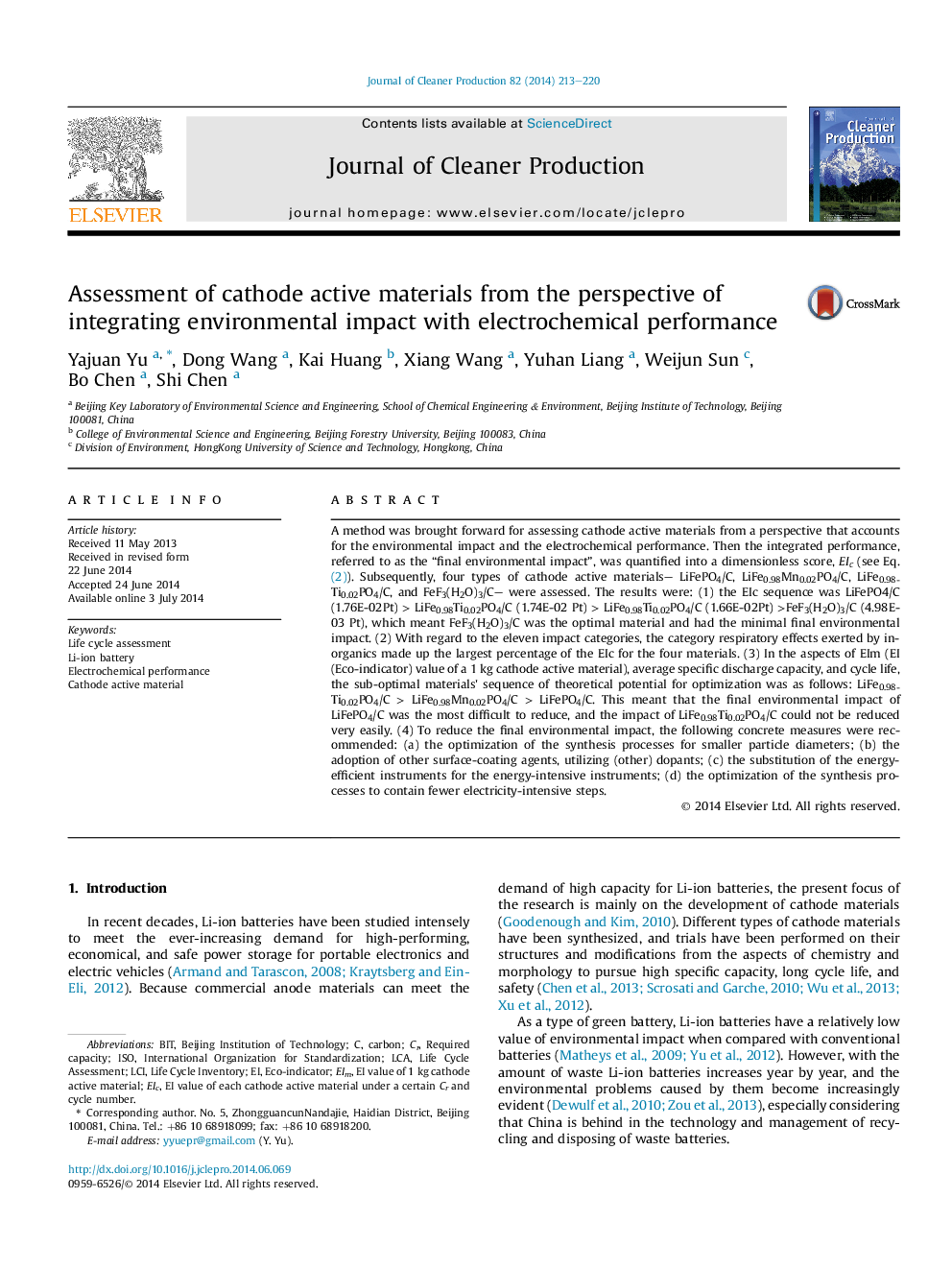| کد مقاله | کد نشریه | سال انتشار | مقاله انگلیسی | نسخه تمام متن |
|---|---|---|---|---|
| 8105833 | 1522164 | 2014 | 8 صفحه PDF | دانلود رایگان |
عنوان انگلیسی مقاله ISI
Assessment of cathode active materials from the perspective of integrating environmental impact with electrochemical performance
ترجمه فارسی عنوان
ارزیابی مواد فعال کاتدی از منظر یکپارچه سازی اثر محیطی با عملکرد الکتروشیمیایی
دانلود مقاله + سفارش ترجمه
دانلود مقاله ISI انگلیسی
رایگان برای ایرانیان
کلمات کلیدی
EIMLCILCA - ارزیابی چرخه حیاتLife Cycle Assessment - ارزیابی چرخه عمر یا چرخه حیاتISO - ایزوLi-ion battery - باتری لیتیوم یونBIT - بیتInternational Organization for Standardization - سازمان بین المللی استاندارد سازیElectrochemical performance - عملکرد الکتروشیمیاییCathode active material - ماده فعال کاتدEIC - مهندسانLife Cycle Inventory - موجودی چرخه زندگیCarbon - کربن
موضوعات مرتبط
مهندسی و علوم پایه
مهندسی انرژی
انرژی های تجدید پذیر، توسعه پایدار و محیط زیست
چکیده انگلیسی
A method was brought forward for assessing cathode active materials from a perspective that accounts for the environmental impact and the electrochemical performance. Then the integrated performance, referred to as the “final environmental impact”, was quantified into a dimensionless score, EIc (see Eq. (2)). Subsequently, four types of cathode active materials- LiFePO4/C, LiFe0.98Mn0.02PO4/C, LiFe0.98Ti0.02PO4/C, and FeF3(H2O)3/C- were assessed. The results were: (1) the EIc sequence was LiFePO4/C (1.76E-02Pt) > LiFe0.98Ti0.02PO4/C (1.74E-02 Pt) > LiFe0.98Ti0.02PO4/C (1.66E-02Pt) >FeF3(H2O)3/C (4.98E-03 Pt), which meant FeF3(H2O)3/C was the optimal material and had the minimal final environmental impact. (2) With regard to the eleven impact categories, the category respiratory effects exerted by inorganics made up the largest percentage of the EIc for the four materials. (3) In the aspects of EIm (EI (Eco-indicator) value of a 1 kg cathode active material), average specific discharge capacity, and cycle life, the sub-optimal materials' sequence of theoretical potential for optimization was as follows: LiFe0.98Ti0.02PO4/C > LiFe0.98Mn0.02PO4/C > LiFePO4/C. This meant that the final environmental impact of LiFePO4/C was the most difficult to reduce, and the impact of LiFe0.98Ti0.02PO4/C could not be reduced very easily. (4) To reduce the final environmental impact, the following concrete measures were recommended: (a) the optimization of the synthesis processes for smaller particle diameters; (b) the adoption of other surface-coating agents, utilizing (other) dopants; (c) the substitution of the energy-efficient instruments for the energy-intensive instruments; (d) the optimization of the synthesis processes to contain fewer electricity-intensive steps.
ناشر
Database: Elsevier - ScienceDirect (ساینس دایرکت)
Journal: Journal of Cleaner Production - Volume 82, 1 November 2014, Pages 213-220
Journal: Journal of Cleaner Production - Volume 82, 1 November 2014, Pages 213-220
نویسندگان
Yajuan Yu, Dong Wang, Kai Huang, Xiang Wang, Yuhan Liang, Weijun Sun, Bo Chen, Shi Chen,
